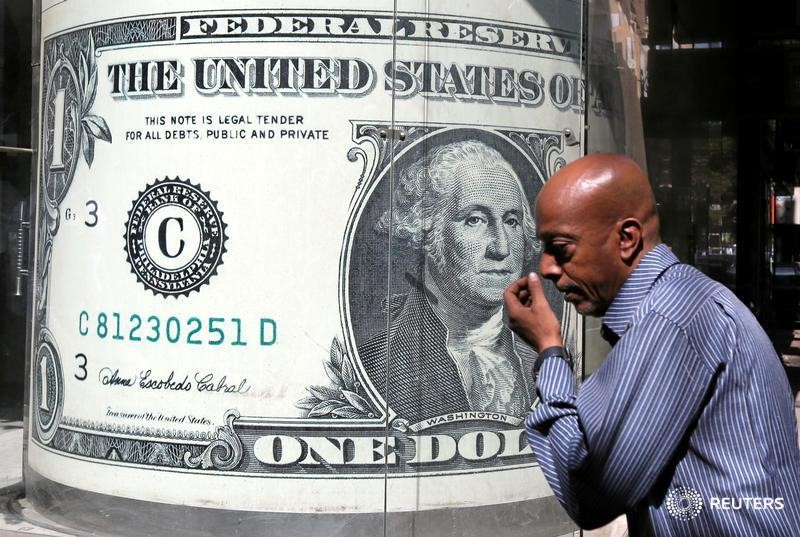Investing.com - The dollar held gains into Asia on Thursday with regional data hitting the Aussie, while the growing speculation of a Fed rate hike this month underpins sentiment for the greenback.
The U.S. dollar index, which measures the greenback’s strength against a trade-weighted basket of six major currencies, was last quoted up 0.40% to 101.74. AUD/USD fell 0.39% to 0.7646, while USD/JPY changed hands at 114.10, up 0.33%. In Japan, the Nikkei manufacturing PMI for February edged up to 49.2 from 49.0.
In Australia, building approvals for January jumped 1.8% month-on-month compared to a 0.4% decline seen and private house approvals slumped 3.0% following a 2.5% decline the previous month, while the trade balance surplus narrowed sharply to A$1.302 billion, compared to an expected $A$3.800 billion
Overnight, the U.S. dollar traded sharply higher against a slew of major currencies on Wednesday, as markets priced in a higher possibility of a March rate hike, after hawkish comments from several Federal Reserve officials.
The dollar continued to extend gains during mid-afternoon trade, despite a lack of specific policy details from President Donald Trump’s first major address to Congress on Tuesday, as a spike in expectations of a March rate hike remained front and centre.
Philadelphia Fed President Patrick Harker sparked hopes of March rate hike on Tuesday, when he reiterated his view that he expects the central bank to raise U.S. interest rates three times this year as long as the economy continues to strengthen.
New York Fed President William Dudley said he sees a rate hike in the "relatively near future", which echoed comments from San Francisco Federal Reserve Bank President John Williams, who suggested that the central bank has to raise interest rates in order to avoid a 'too hot' economy that in the end isn’t sustainable. According to investing.com’s Fed rate monitor tool, more than 60% of traders expect a rate hike in March, compared to just over 30 percent on Tuesday.
Meanwhile, a flurry of top-tier U.S. economic data ensured the greenback held firm, as February U.S. Manufacturing data beat expectations while February U.S. construction spending was weaker than expected.
Elsewhere, GBP/USD declined 0.51% to $1.2317, after UK Manufacturing Purchasing Index (PMI) fell to 54.6 in January, analysts had expected the index to drop to 55.6.
